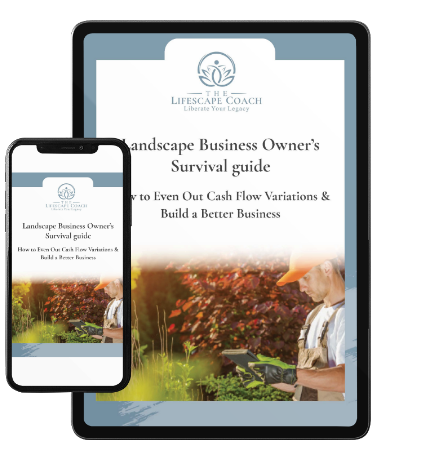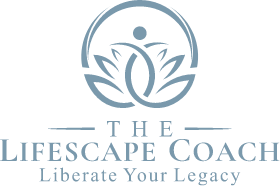When the Work You Love Wears You Down: How to Lead With Grace
The river in Costa Rica was rushing, cold, and impossible to predict.
At first, it looked shallow enough to wade through, the kind of current you could control with balance and will. But the moment I stepped into it, the force of the water seized my legs and every assumption I had about control vanished.
I clung to the rocks for footing, testing each step. The women with me laughed, that bright, nervous laugh that comes when exhilaration flirts with danger. And then I did something that surprised even me. I let go.
For a brief second, I expected to float.
I didn’t.

The river took me fast and hard.
It didn’t care about my plans, my posture, or my pride.
It was alive, and I was simply in it.
That moment has stayed with me because it mirrors what life and business feel like when the work you love starts to wear you down. The current is strong. The footing uncertain. The water cold and clarifying. I’m beginning to understand that the work of this season is not to fight the current, but to learn how to be held by it.
The Season of Fatigue and Grief
Most mornings I wake up tired. Even when I’ve slept.
Menopause rewrote my sleep cycles, my energy, and my sense of predictability. But it’s not only physical fatigue I feel. It’s the fatigue of four decades of striving.
As a founder, a designer, a contractor, a mother, wife, daughter, and friend, I’ve lived most of my life for others. Those roles made me strong, capable, and reliable, but they also carved deep ruts of self-abandonment.
Now, the unprocessed grief of all I’ve carried, lost, and buried is rising like floodwater. The losses of my parents, the exhaustion of COVID, the ache of all the times I said “I’m fine” when I wasn’t—they all want to be seen.
That rising grief is exhausting. But it’s also necessary.
What we don’t metabolize, we pass on—to our children, our employees, our communities.
Entrepreneurs carry unspoken trauma more often than we admit. Many of us started our companies not just to build something better, but to become something better—to prove our worth, to rewrite an old story. That fire gets us far. But if we never pause to heal the origin of the fire, it consumes us from within.
The Old Way of Seeking
For most of my life, I’ve been a seeker. Restless. Insatiable. Always chasing the next horizon.
But seeking isn’t neutral. There’s a difference between curiosity and compulsion.
When I was younger, I didn’t know that.
I hoarded information like a dragon hoards gold—parenting books, design manuals, business systems, philosophy texts. Knowledge made me feel safe, competent, legitimate. Dyslexia and undiagnosed ADHD had convinced me early that I was “the dumb one,” so I worked twice as hard to prove I wasn’t.
That drive built everything I have today: my company, my career, my reputation. But it also came at a cost.
I built systems faster than I could embody them.
I gathered tools but not stillness.
I proved myself but didn’t meet myself.
Like Ulysses, I reached the shore of success only to find myself restless again—standing in the palace of everything I’d built, staring out at the sea, wondering what was next.
A New Framework for Seeking
It wasn’t therapy or strategy that shifted me. It was yoga.
Yoga gave me language for what I’d been unable to name.
The practice of aparigraha—non-grasping—showed me how tightly I’d been holding everything: outcomes, identities, even people.
The concept of satya—truthfulness—taught me that avoidance is a form of lying.
And the courage to lean into the point of pain, as Pema Chödrön writes, helped me understand that healing doesn’t happen by skirting discomfort, but by letting it pierce you until the wound becomes wisdom.

I cry more now.
I pause more.
I speak less but mean more.
Grace, I’m learning, is the quiet power that comes from presence.
I no longer push grief aside to “get back to work.” I let it inform how I work.
My team knows me as fair and firm. Still discerning. Still direct. But softer.
Less dragon. More river.
This doesn’t mean I’ve lost my edge. It means I finally understand where my sharpness belongs: in clarity, not in defense.
From Founder to CEO: Sailing Differently
For years I’ve said it. I’ve been stuck in founder mode.
Founders are builders. We carry every tool. We fix, mend, improvise, and protect. But staying in that posture too long becomes unsustainable. It isolates us from the very team we’ve built.
To move into true CEO leadership requires something radical: psychological safety.
That’s why I invested in an HR director when others said to go fractional. People aren’t line items. They’re living systems—as vital and unpredictable as that Costa Rican river. You don’t manage people by containing them; you support them by creating steady banks that guide and protect their flow.
Profit follows people who feel safe.
Innovation follows leaders who are willing to evolve.
This is the essence of regenerative business:
-
Systems that nourish rather than deplete.
-
Cultures that heal as they grow.
-
Founders who mature into conscious CEOs—centered, embodied, awake.
The River Revisited
When I think back to that day in the river, I realize I wasn’t meant to conquer it. I was meant to listen.
To feel the pull of the current and know that letting go doesn’t mean losing control. It means trusting that I can navigate with presence, not force.
The river doesn’t slow down for us. Neither does life.
But we can learn to steady ourselves within it—with frameworks, communities, and practices that remind us who we are beneath the roles we play.
Tennyson wrote:
“Though much is taken, much abides...
Made weak by time and fate, but strong in will
To strive, to seek, to find, and not to yield.”
At 59, I understand those words in my bones.
This is not the striving of youth, but the steady seeking of wisdom. The willingness to look inward, to release what’s no longer true, and to build again from a centered place.
Because though much is taken, much abides. The courage to keep leading with grace may be the most regenerative act of all.
The Invitation
If this speaks to you—if you feel the ache of fatigue and the pull to evolve—you’re not alone.

There’s a new way to lead, and it doesn’t require abandoning what you’ve built. It asks you to return to yourself within it.
That’s the work we do in the Regenerative Business Community.
We explore the inner and outer systems that help founders grow into CEOs, not by adding more to your plate, but by aligning who you are with how you lead.
It’s the same work that will take us, one year from now, to Costa Rica—to sit beside that river together and remember what it feels like to be fully alive in our work and our skin.
Because though much is taken, much abides.
And the will to seek a newer world still lives in us.
Landscape Business Owners Survival Guide


